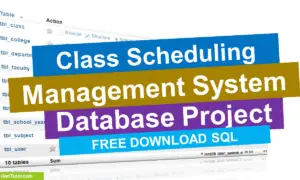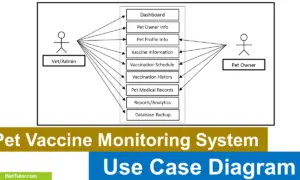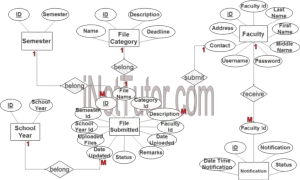Barangay Management System Conceptual Framework
This post will demonstrate how to develop a conceptual framework for a capstone project called Barangay Management System. The study’s conceptual framework was built using the input, process, and output (IPO) model.
About the Project
Table of Contents
The capstone project, entitled “Barangay Management System” is designed to be used by barangays. The system will automate the processes and transactions in the barangay. Conventionally, most the barangay uses manual approaches in doing their everyday activities and transactions. They use the pen and paper approach in recording and face-to-face in doing transactions. This method is outdated during the techno-era we’re having right now. It is highly prone to human errors and inefficient in providing satisfying service to the residents. There is an intensified need to improve the system used in operating and conducting a transaction in the barangay and its residents.
A barangay management system (BMS) is a computerized system that is designed to streamline the operations of a barangay, which is the smallest administrative division in the Philippines. A BMS typically includes modules for managing resident information, issuing permits and licenses, managing public services, and tracking financial transactions. By automating these processes, a BMS can help barangay officials to more effectively manage the day-to-day operations of their community.
A BMS can be useful for a research study because it can provide a wealth of data about the residents and operations of a barangay. For example, a study that is focused on understanding the demographics of a community could use data from the resident information module to analyse the age, gender, and income of the residents. A study that is focused on the effectiveness of a particular public service could use data from the public services module to track usage and satisfaction with the service.
Objectives of the Study
- To allow residents to view announcements and inquire about barangay certificates electronically.
- To design a system that will electronically store barangay records for easy retrieval.
- To allow residents to easily and conveniently request service from the Barangay such as the creation of foot walks and installation of streetlights.
- To evaluate the acceptability of the system in terms of effectiveness, efficiency, quality, timeliness, and productivity.
What is an IPO Model of Conceptual Framework?
An IPO (Input-Process-Output) model is a simple framework that is often used to conceptualize and organize a research study. This model describes how input variables are transformed into output variables through a series of processes.
The IPO model has three main components:
Input: This refers to the factors or variables that are used as the starting point for the study. In the context of a barangay management system, input variables might include the number of residents in the barangay, the amount of funding allocated for public services, or the qualifications of barangay officials. Literature review is also necessary in this part for the researchers need to look similar topics that might help them in the development of the project.
Process: This refers to the series of steps or operations that are performed on the input variables in order to produce the desired output. In the case of a BMS, the process might involve inputting resident information into the system, issuing permits and licenses, or managing public services. In general, this part refers to the SDLC model used by the researchers.
Output: This refers to the end results or outcomes of the study. In the context of a BMS, output variables might include the number of residents who have been issued permits or licenses, the usage rate of public services, or the satisfaction levels of residents with the BMS.
The IPO model can be a useful tool for conceptualizing and organizing a research study because it provides a clear, structured way of thinking about the problem at hand. This model allows researcher to identify the needed input, how to process them and also what are the expected outcome.
It is also important to note that IPO model is a simplified representation of complex systems, and there might be other factors at play that could not be considered in this model. Researchers should consider these factors and use a more appropriate model if needed.
Conceptual Framework Diagram
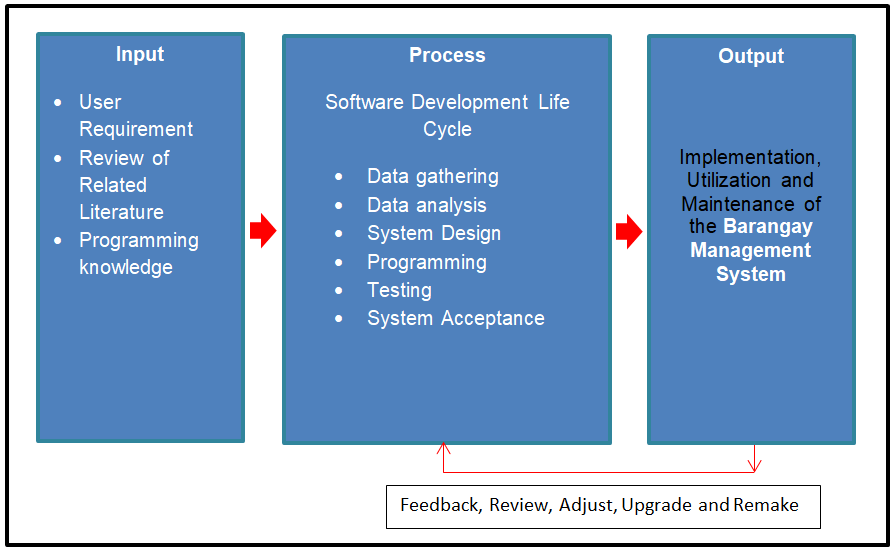
The image above depicts the project’s conceptual framework, entitled Barangay Management System. It is based on the input, process, and output (IPO) model.
Input
User Requirement – This is the section where the researchers have gathered data on the system’s special features. It’s critical to think about their ideas because they’ll be the ones using the Barangay Management System.
Review of Related Literature – The researchers have undertaken investigations and research in the area of the proposed system. The researchers will benefit from this procedure as they create the project or system.
This is where the researchers can now use their knowledge in programming to design and develop the system.
Process
This is the part where the researchers will select and choose the best software development life cycle model for the project.
Data gathering
During this phase, the study’s researcher gathered all conceivable needs for the system’s development, including those obtained from the system’s beneficiaries, the end users. The survey questionnaire was created by the researcher and was validated by specialists. The surveys were used to collect information in order to improve the performance of the proposed system for future community use.
Data analysis
Consultation is used to acquire requirements from the end-user, and ideas are made. We also conducted a survey questionnaire, which the three experts approved (IT Expert, English Grammarian, and Researcher). And these questionnaires served as our data collection instrument for assessing the performance of the manual system, which served as the foundation for developing our proposed system.
System Design
The prototype and the proposed features of the system are created in this phase. Also, the concrete understanding of how the system will operate is developed. In here, we identify all the necessary system inputs and outputs, design of data, processes and interfaces.
Programming
In this stage, we materialized the whole idea of the software to be designed. We created the program for the proposed system. The actual coding of the software is based on the system design and the requirements needs to be met. This is where the proper execution of the previous stages ensures a smooth implementation.
Program testing
In this phase, the researcher performed series of testing to check for any possible problems may arise during implementation and operation of the software and if the specification has been met.
System acceptance
This is the final stage, where the system is being installed and to be maintained after actual implementation. One must take into consideration are the hardware and the software requirements for the proper installation of the system. As part of the acceptance of this phase, the client is required to have a user training to enable them to familiarize fully the whole system.
Output
After all of the relevant procedures have been completed, the project comes to life and is carried out in the actual world. A new initiative has been born, and it will be nurtured in order to ensure the project’s long-term viability. At this time, the Barangay Management System will be installed, used, and maintained.
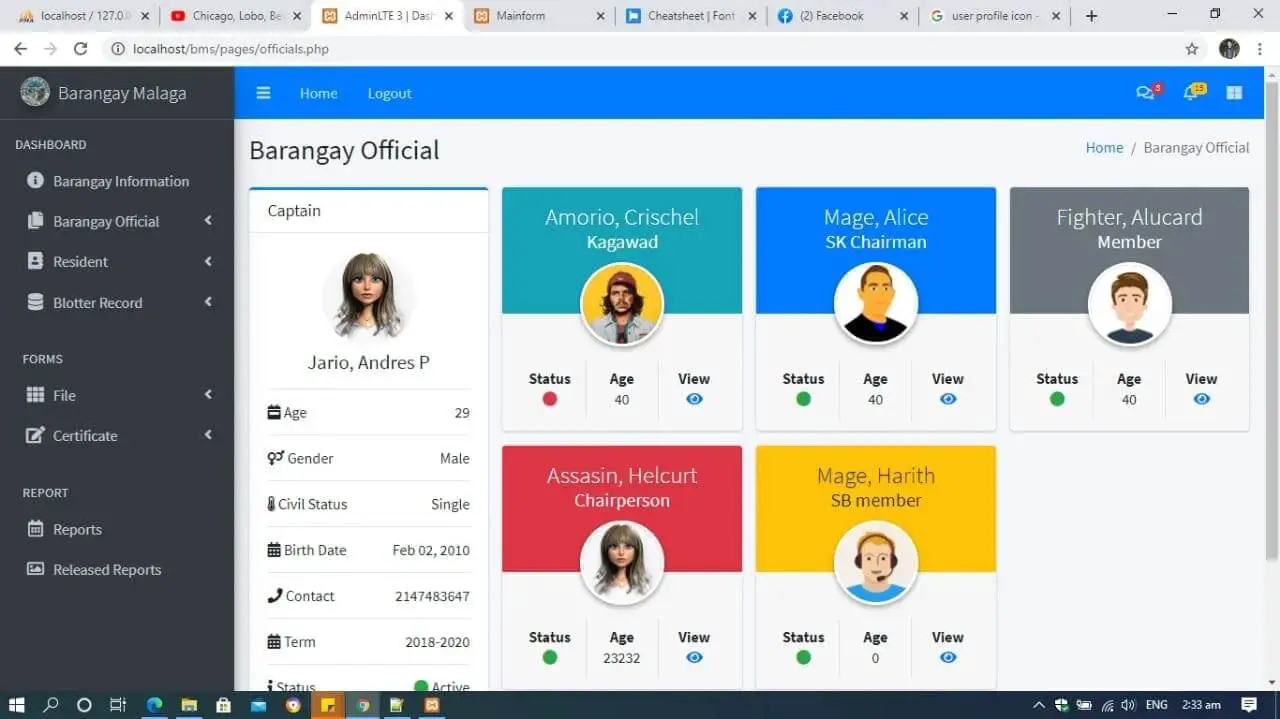
Summary
The input, process, and output (IPO) model will be used to create the study’s conceptual framework. Before applying their programming talents to build the project, the researchers identify the project’s user requirements and evaluate relevant literature for the study. The researchers will use the Software Development Life Cycle (SDLC) technique to finish the system. Its goal is to ensure that the project goes through a number of stages in order to ensure that it has full functionality that satisfies the needs of the consumers. As a result of this project, the Barangay Management System will be implemented, used, and maintained.
Readers are also interested in:
Barangay Management System using PHP MySqli
Barangay Management System Use Case Diagram
Barangay Management System ER Diagram
You may visit our Facebook page for more information, inquiries, and comments. Please subscribe also to our YouTube Channel to receive free capstone projects resources and computer programming tutorials.
Hire our team to do the project.
